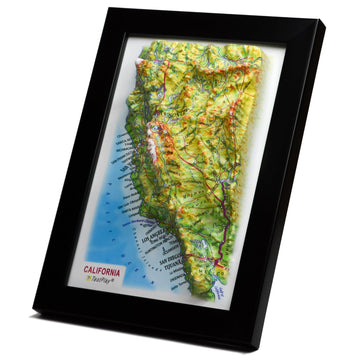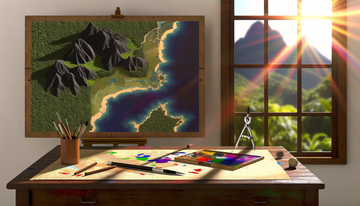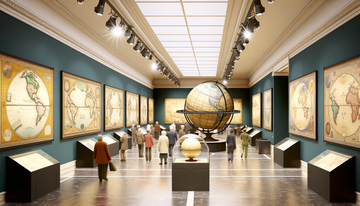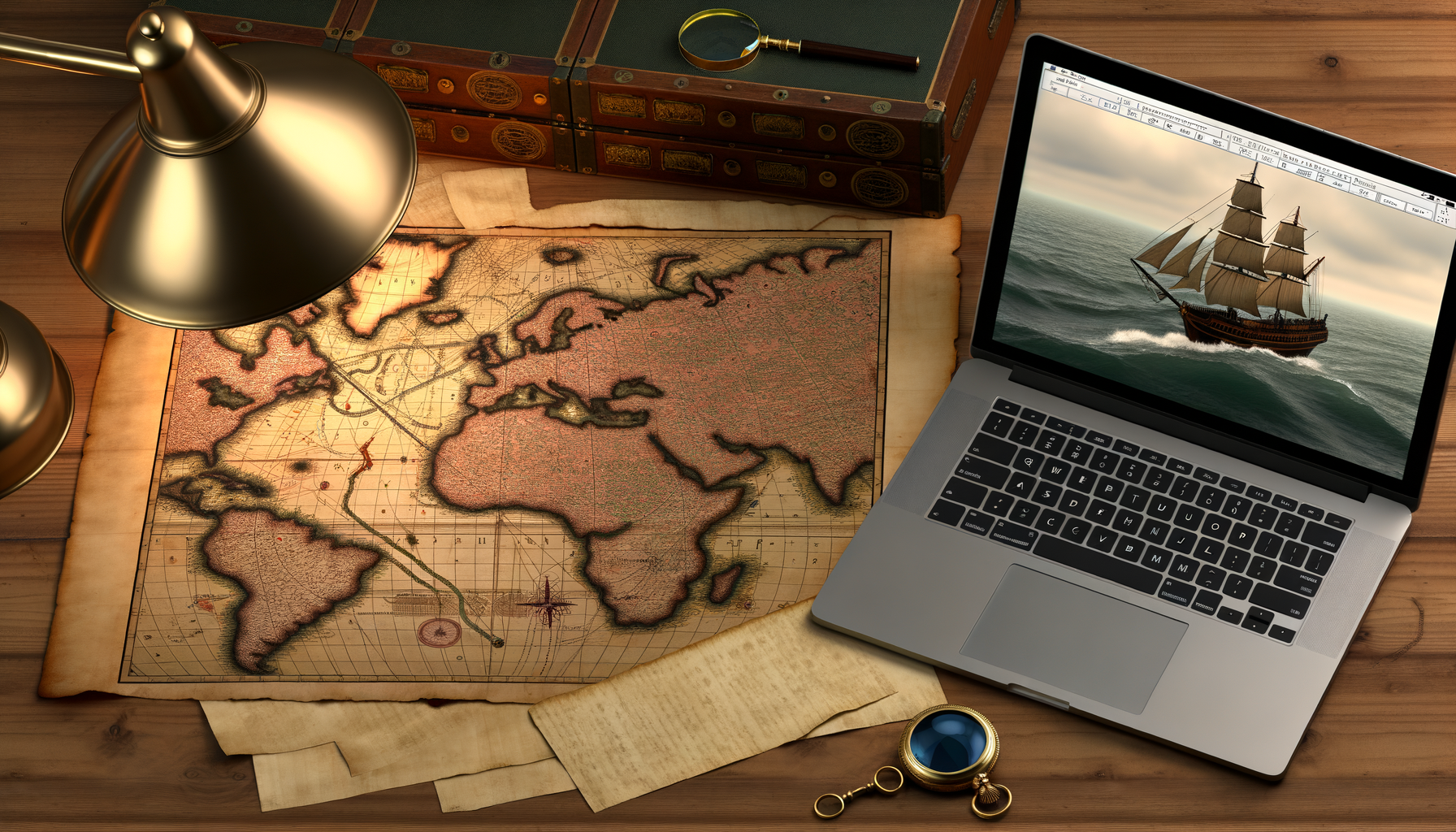When you look at a historical map, perhaps one detailing a medieval city or a charting a colonial coastline, it's easy to view it primarily as a charming artifact of the past. Our modern eyes, accustomed to the pin-point precision of GPS and satellite imagery, often assume that these older maps, created with rudimentary tools and techniques, must be inherently inaccurate. They might be beautiful, we think, but are they truly reliable guides to the past?
This assumption, however, is surprisingly and often dramatically wrong. While historical maps certainly differ from their modern counterparts in projection, style, and the type of information they prioritize, many exhibit a level of accuracy that is nothing short of astonishing, especially when considering the technological limitations of their time. They represent not just artistic endeavors, but rigorous scientific undertakings driven by critical needs like navigation, trade, administration, and warfare.
This post aims to challenge that common misconception. We will delve into the world of historical cartography to understand *how* these early mapmakers achieved such remarkable accuracy, explore the techniques and instruments they employed, and look at specific examples that demonstrate their skill. By understanding the methods and purposes behind historical maps, we gain a deeper appreciation for their value, not just as historical records or art objects, but as surprisingly reliable documents that continue to inform us today. This exploration offers a solution to the limited perspective that dismisses these maps as merely quaint relics, revealing them instead as testaments to human ingenuity and vital sources of information.
Defining "Accuracy" in a Historical Context
Before we marvel at the accuracy of historical maps, it is crucial to understand what "accuracy" meant to their creators and what it means when we evaluate them today. It's fundamentally different from the absolute, sub-meter precision we expect from modern digital mapping systems. Historical accuracy was often relative, practical, and served a specific purpose, reflecting the knowledge and tools available at the time.
For a navigator centuries ago, an accurate map wasn't necessarily one that showed the mathematically perfect shape of a continent, but one that reliably guided a ship along a coastline, pinpointed safe harbors, and indicated potential dangers. For a land surveyor, accuracy meant defining property boundaries clearly and consistently so taxes could be levied or ownership disputes settled. For a military strategist, it meant accurately representing terrain, river crossings, and fortifications relevant to planning a campaign.
Therefore, when we discuss the accuracy of historical maps, we often refer to several types:
1. Positional Accuracy: How well do locations on the map correspond to their actual positions on the ground? This can be relative (is A correctly positioned relative to B?) or absolute (is A at its true geographic coordinates?).
2. Topographical Accuracy: How well does the map represent features like coastlines, rivers, mountains, and built structures? This includes their shape, extent, and relative positions.
3. Thematic Accuracy: If the map depicts information beyond geography, such as population density, resources, trade routes, or political boundaries, how reliably does it represent this data?
4. Representational Accuracy: Does the map's symbology and visual language clearly and consistently convey the intended information?
It's also important to distinguish accuracy from precision. A map can be accurate in that it shows features in roughly correct relative positions, but lack precision in its measurements. Conversely, a map could be very precise in detailing a small area but inaccurate in its placement within a larger geographic context due to errors in the overall survey. Historical mapmakers often prioritized accuracy relevant to the map's intended use over a generalized, absolute precision that was impossible to achieve with their tools.
The Cartographer's Toolkit: Methods and Technology Behind Historical Accuracy
The surprising accuracy of many historical maps is a testament to the ingenuity, dedication, and sophisticated (for their time) techniques employed by cartographers. They weren't simply guessing or sketching; they were applying principles of geometry, astronomy, and practical measurement that evolved significantly over centuries. The journey from simple itineraries to complex trigonometric surveys is a fascinating story of scientific progress.
Early methods were often based on observation, estimation, and descriptions from travelers. Itineraries listed places and distances, often based on travel time or pacing. Compass bearings provided directional information, allowing for the creation of maps showing relative angles between locations. While these methods could be prone to cumulative error over large distances, they formed the foundation of geographic understanding.
Early Instruments and Techniques
As cartography developed, so did the tools. Simple compasses became more refined, allowing for more accurate direction finding. The development of the astrolabe and quadrant, instruments used for measuring angles, enabled cartographers and navigators to determine latitude with increasing accuracy by observing celestial bodies like the sun or North Star. This was a critical step towards establishing absolute positions on the globe.
Measuring distances on land involved methods like chaining (using physical chains of known length), pacing (counting steps), or using odometers (wheeled devices that measured distance rolled). While these methods were susceptible to variations in terrain and human error, systematic application over relatively flat or well-surveyed areas could yield surprisingly good results.
The Advent of Triangulation
One of the most significant breakthroughs was the development and widespread adoption of triangulation. This geometric technique, refined by figures like Gemma Frisius in the 16th century, allowed surveyors to map large areas accurately from a few measured baselines. By measuring the length of one line between two points (the baseline) and then measuring the angles from these points to a third visible point, the distance to the third point could be calculated using trigonometry.
By creating a network of interconnected triangles across a landscape, cartographers could establish the relative positions and distances of numerous points without having to measure every distance directly. This method was far more efficient and accurate than chaining or pacing vast areas, forming the basis for national surveys like the French Cassini maps or the British Ordnance Survey. The precision relied on accurate angle measurements, which improved with better sighting instruments like the theodolite.
Astronomical Observations and Timekeeping
Determining longitude was historically much more difficult than latitude. It required knowing the precise time difference between a location and a reference meridian (like Greenwich). Accurate timekeeping at sea or in remote survey locations was a major challenge for centuries. The invention of reliable marine chronometers in the 18th century revolutionized longitude determination, leading to a dramatic increase in the accuracy of global mapping and nautical charts. Before this, longitude estimates relied on less reliable methods like observing lunar distances or the eclipses of Jupiter's moons (impractical at sea).
Systematic Surveys
Many accurate historical maps were the result of systematic, often state-sponsored, surveys. These were not one-off efforts but planned projects involving teams of surveyors, astronomers, and mathematicians working over years or even decades. Examples include coastal surveys conducted by navies for navigation and defense, land surveys for administrative purposes (like tax collection or property management), and national topographical surveys aimed at creating comprehensive maps of entire countries.
These large-scale projects generated vast amounts of data from field measurements, astronomical observations, and baseline surveys. The data was then compiled, calculated, and drawn by skilled draftsmen. The accuracy of the final map depended heavily on the rigor of the field work, the mathematical expertise used in calculations, and the care taken in the drawing process. The dedication and skill of the individuals involved were paramount.
Case Studies: Examples of Remarkably Accurate Historical Maps
Looking at specific examples helps illustrate the level of accuracy achieved in different periods and for different purposes. These maps weren't perfect by modern standards, but their utility and precision relative to their time are striking.
Ptolemy's Geographia (circa 150 AD)
Claudius Ptolemy's work is a foundational text in the history of cartography. His *Geographia* was not a collection of maps itself, but a treatise on how to create them, including a catalog of some 8,000 locations with their calculated latitudes and longitudes. While his understanding of the Earth's circumference was significantly underestimated, and his longitude measurements (based on estimated travel times) were less accurate than his latitudes (based on astronomical observation), his system provided a framework for creating maps on a grid using mathematical principles.
The maps reconstructed from Ptolemy's data by later scholars show a recognizable representation of the known world from the Atlantic to Southeast Asia. The relative positions of major features within the Mediterranean and parts of Europe and North Africa are surprisingly accurate for their time, demonstrating the power of applying mathematical geography. While significant distortions exist (especially in the extent of Asia), Ptolemy's systematic approach influenced cartography for over a thousand years.
Portolan Charts (13th - 16th Centuries)
These nautical charts, primarily created in the Mediterranean basin, are renowned for their astonishing accuracy in depicting coastlines, harbors, and islands. Unlike earlier T-O maps or world maps based on classical texts, portolan charts were intensely practical tools for sailors. They were based on direct observation and measurement of compass bearings and distances sailed.
The distinctive feature of portolan charts is the network of rhumb lines radiating from compass roses, providing sailors with direct lines of bearing between ports. While they did not account for the Earth's curvature over long distances and were less accurate for inland areas, their representation of coastlines like the Mediterranean and Black Seas is remarkably faithful when overlaid on modern maps. This accuracy was born out of necessity – the lives and livelihoods of mariners depended on it.
The Cassini Maps of France (18th Century)
Initiated by the Cassini family under Louis XV, this was the first topographical survey of an entire country using triangulation. The project, spanning over 50 years, resulted in 180 detailed map sheets at a scale of 1:86,400. These maps were a monumental undertaking, demonstrating an unprecedented level of accuracy for a national survey of that era.
The Cassini maps accurately depicted towns, villages, roads, rivers, forests, and land use patterns across France. Their precision was far superior to any previous general maps and remained the standard reference for France for over a century. They were invaluable for administration, infrastructure planning, and military purposes, showcasing the power of systematic, triangulation-based surveying.
The British Ordnance Survey (Late 18th Century onwards)
Following the lead of the French, the British Ordnance Survey began its systematic mapping of Great Britain. Initially driven by military concerns (hence the name), it quickly became the benchmark for highly detailed and accurate topographical mapping. The early principal triangulation of Britain was an incredible feat of surveying and calculation, establishing a precise framework for subsequent mapping at various scales.
Ordnance Survey maps, particularly the large-scale ones, are celebrated for their meticulous detail and high level of positional and topographical accuracy. They recorded landscape features, buildings, boundaries, and elevation with remarkable precision, providing an invaluable record of the changing British landscape over centuries. Their enduring legacy lies in their scientific rigor and practical utility.
Early City Plans
Beyond national surveys, detailed and accurate plans of cities were crucial for urban administration, planning, property ownership, and defense. Maps like those of Rome by Giambattista Nolli (1748) are famous examples of highly accurate and detailed urban cartography. Nolli's map not only showed streets and buildings but also distinguished between public and private spaces within buildings, offering a unique and accurate representation of the urban fabric.
These city plans required intensive ground-level surveying, measuring streets, block by block, and often involving detailed architectural drawings. The accuracy was vital for legal and administrative purposes, ensuring property rights were clear and urban development could be managed. Their detail provides historians and urban planners with invaluable insights into the structure and layout of historical cities.
Factors Influencing Historical Map Accuracy
While we've seen examples of surprising accuracy, it's also true that not all historical maps were equally reliable. A complex interplay of factors determined how accurate a map could be. Understanding these factors helps us interpret historical maps critically, appreciating both their strengths and limitations.
Factors Contributing to Accuracy
Several elements worked in favor of historical mapmakers striving for accuracy. Their success often depended on the combination of these positive influences:
1. Specific Purpose: Maps created for a clear, practical purpose (like navigation, property boundaries, or military planning) tended to be more accurate in the areas relevant to that purpose because their utility depended directly on their reliability.
2. Available Tools and Knowledge: The adoption of instruments like compasses, astrolabes, quadrants, theodolites, and later chronometers, coupled with advancements in mathematics (especially trigonometry), provided the technical means for more accurate measurement and calculation.
3. Skilled Cartographers and Surveyors: Accuracy relied heavily on the expertise, experience, and meticulousness of the individuals conducting the surveys and drawing the maps. Training and apprenticeship played a crucial role in transmitting these skills.
4. Availability of Reliable Data: Access to previous surveys, astronomical observations, and detailed ground reports from credible sources provided better starting points and supplementary information for map compilation.
5. Competition and Need for Reliability: In fields like maritime trade and military strategy, where accurate information was critical for success and safety, there was a strong impetus to produce the most reliable maps possible, driving innovation and demanding rigor.
When these positive factors aligned – a clear need, the right tools, skilled practitioners, and good data – historical maps could achieve truly remarkable levels of accuracy for their time. The great national surveys and detailed portolan charts are prime examples of this synergy.
Challenges and Limitations
Conversely, numerous factors could limit or compromise the accuracy of historical maps. These challenges were often inherent to the technology, the source information, or the context in which the map was created:
1. Limitations of Technology: Even the best instruments had limitations. Measurement errors were cumulative, and achieving consistent accuracy over vast, difficult terrain or across oceans was incredibly challenging before modern satellite systems.
2. Inaccurate Source Data: Maps were often compiled from various sources, including travelers' accounts, rumors, or older, less accurate maps. Errors or biases in these sources could propagate into the new map. Information was sometimes based on assumption rather than direct observation.
3. Political or Economic Bias: Maps were powerful tools and could be deliberately distorted or incomplete for political, economic, or military reasons. Trade routes might be kept secret, disputed territories misrepresented, or colonial claims exaggerated through cartography.
4. Artistic License and Filling Gaps: When direct information was unavailable, mapmakers sometimes filled in unknown areas with imagined features, mythical creatures, or decorative elements. While visually appealing, this obviously compromised geographic accuracy.
5. Lack of Standardized Measurements: Units of distance (leagues, miles, etc.) varied significantly by region and time period, making it difficult to compile data from different sources consistently.
6. Projection Issues: Representing the spherical Earth on a flat map inevitably involves distortion. The choice of projection (and errors in its application) could significantly impact the accuracy of shapes, areas, and distances, especially on world maps.
Understanding these limitations is crucial. A historical map is a product of its time, reflecting not only the best available knowledge and techniques but also the prevailing beliefs, political contexts, and economic pressures. Evaluating its accuracy requires considering these mitigating factors alongside the evident skill involved in its creation.
Beyond Location: Thematic and Representational Accuracy
The accuracy of historical maps isn't limited to just getting the latitude and longitude right. Many maps conveyed complex information about resources, populations, political divisions, or infrastructure. The accuracy in representing this thematic data, and the clarity with which it was communicated through symbols and visual language, is another dimension of their reliability.
Maps were used to depict agricultural land use, forest resources, mineral deposits, and potential sites for mills or fortifications. The accuracy of these thematic layers depended on the quality of the underlying surveys and reports, often compiled by administrators, engineers, or military officers. For example, military maps needed accurate depictions of terrain not just for position, but for understanding strategic advantages or obstacles.
Furthermore, maps were powerful tools for representing political boundaries, spheres of influence, or trade networks. While sometimes subject to bias or aspiration rather than pure fact, many maps sought to accurately record existing administrative divisions or established routes. The precision in depicting these non-geographic elements was vital for governance and commerce.
The visual language of historical maps – the use of symbols, colors, and text – also contributed to their representational accuracy. Clear, consistent symbology ensured that the intended information about features like churches, mills, bridges, or different types of vegetation was accurately conveyed to the map user. The skill of the draftsman in rendering details clearly and legibly was just as important as the accuracy of the underlying survey data.
How Modern Technology Verifies and Utilizes Historical Maps
Our modern technology has provided us with unprecedented tools to assess the accuracy of historical maps and unlock their full potential as sources of information. Techniques like digitization and georeferencing allow us to directly compare historical maps with the highly accurate geographic data available today, confirming the surprising skill of early cartographers and revealing insights we might otherwise miss.
Digitization involves creating high-resolution digital images of historical maps. Georeferencing is the process of aligning these digital images to a modern coordinate system. This is done by identifying common points (control points) on both the historical map and a modern reference map (like a satellite image or modern topographical map) and using software to stretch, rotate, and transform the historical map image to fit the modern one.
Once a historical map is georeferenced, it can be overlaid on modern satellite imagery or integrated into Geographic Information Systems (GIS). This allows for direct visual comparison, making the historical map's accuracy immediately apparent. We can see how closely old coastlines match modern ones, how accurately historical road networks align with current transportation routes, or how precisely historical buildings or property boundaries were depicted.
This process not only verifies the accuracy of historical maps but also makes them powerful tools for modern research and applications. Historians can use georeferenced maps to study changes in landscapes, urban development, or historical events with geographic precision. Environmental scientists can track coastal erosion, deforestation, or river course changes by comparing historical maps with modern data. Urban planners and archaeologists use them to understand past land use and locate historical features.
Historical maps, when integrated into GIS, become layers of historical information that can be analyzed alongside modern data. This allows for sophisticated spatial analysis that was previously impossible, providing new insights into the past and its relationship with the present. The ability to verify and utilize historical maps with modern technology underscores their enduring value as reliable records.
The Enduring Value and Legacy of Accurate Historical Maps
The surprising accuracy of historical maps ensures their continued relevance and value in numerous fields today. They are far more than just decorative items or historical curiosities; they are vital primary sources, cultural artifacts, and practical tools that offer unique perspectives on the world and our place in it.
As historical primary sources, accurate maps provide direct evidence of past geographic knowledge, political boundaries, infrastructure, and land use. They offer insights into how people perceived and interacted with their environment. Researchers studying everything from military history and urban development to environmental change and the history of science rely heavily on the information contained within these maps.
Historical maps are also significant artistic and cultural artifacts. Their aesthetic appeal, the craftsmanship involved in their creation, and the unique styles of different cartographic schools make them objects of study and admiration. They reflect the cultural values, artistic conventions, and even the worldviews of the societies that produced them.
Furthermore, accurate historical maps provide essential data for practical applications today. They are used in property disputes to understand historical boundaries, in environmental studies to assess long-term changes in ecosystems, and in urban planning to understand the historical layers of a city. Genealogists and local historians use them to visualize the places where their ancestors lived and worked.
Their legacy is not just in the information they contain, but in the scientific tradition they represent. The drive for accurate representation of the world fueled innovation in mathematics, astronomy, and instrument making. The systematic surveys of the past laid the groundwork for modern geodetic networks and mapping techniques. Historical cartographers were pioneers of data collection, analysis, and visualization.
Conclusion: Appreciating the Skill and Science of Early Cartography
Stepping back from the detailed methods and examples, the overarching takeaway is clear: historical maps are often far more accurate than many people assume. They are not merely charming relics, but sophisticated scientific and technical achievements that represent the pinnacle of geographic understanding and representation for their time.
The surprising accuracy found in many historical maps is a powerful reminder of the ingenuity, dedication, and skill of early cartographers. Armed with compasses, astrolabes, chains, and later theodolites and chronometers, and guided by principles of geometry and astronomy, they managed to capture the world with a level of fidelity that was crucial for the progress of exploration, trade, administration, and science. Their work laid the foundation for the mapping systems we use today.
By challenging our assumptions and looking closely at the evidence, we gain a much deeper appreciation for these incredible documents. Historical maps offer us a window into the past, showing us not only what our ancestors knew about the world, but also demonstrating the sophisticated methods they employed to acquire that knowledge. Their enduring value, verified and amplified by modern technology, ensures that these surprisingly accurate maps will continue to inform and inspire us for generations to come. They stand as testaments to the human drive to understand, measure, and represent the physical world.




